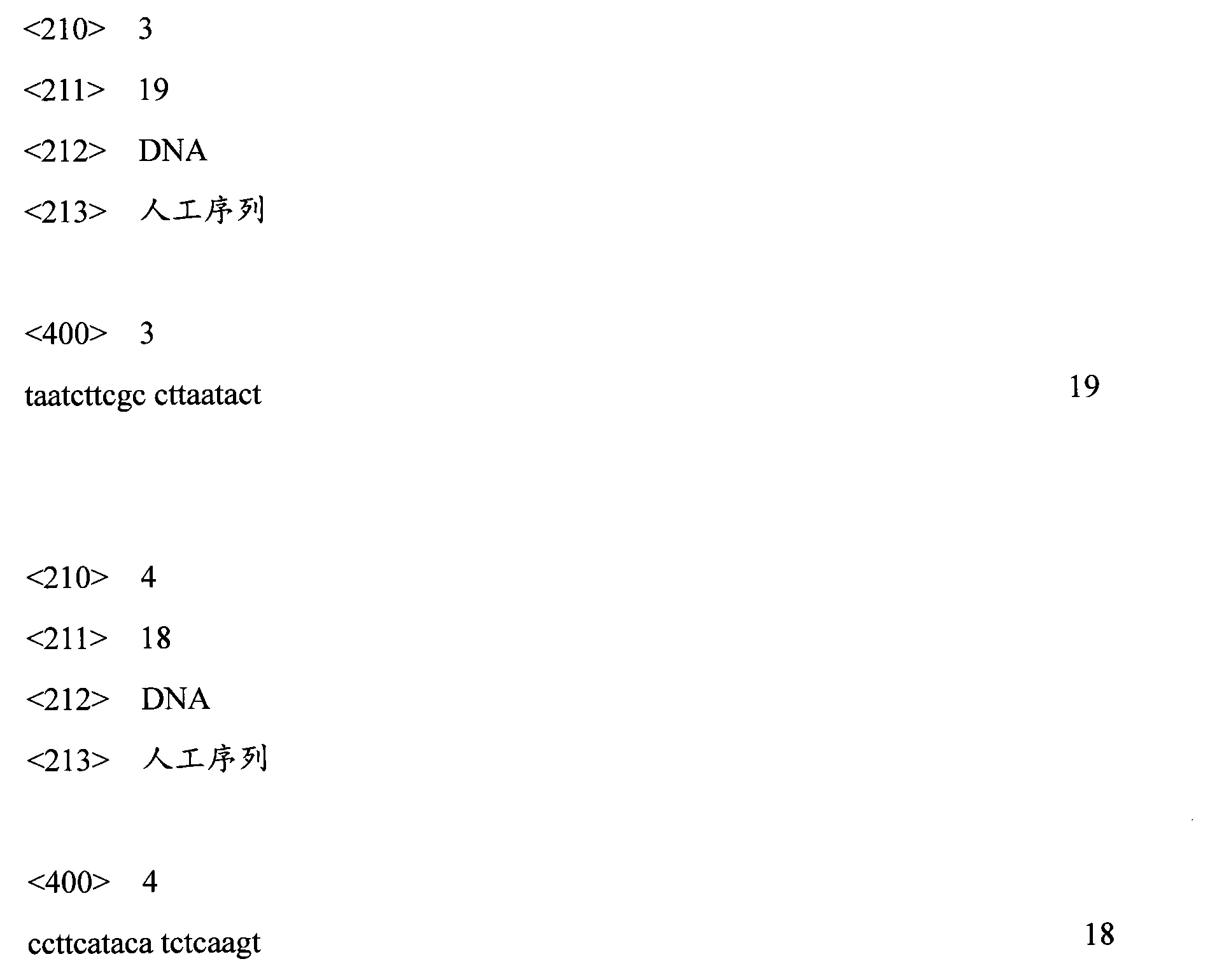Oral squarmous cell carcinomas pathogenic gene BPIFB2 and application thereof
An oral cancer and gene technology, applied in the field of bioengineering, can solve the problems of unknown invasion and metastasis mechanism, lack of early prevention and prognosis judgment means, unclear pathogenesis of oral cancer, etc., and achieve the effect of ensuring consistency and convenient clinical use
- Summary
- Abstract
- Description
- Claims
- Application Information
AI Technical Summary
Problems solved by technology
Method used
Image
Examples
Embodiment 1
[0025] Example 1 Collection of research samples and extraction of RNA
[0026] Eight cases of oral cancer and normal fresh tissues were collected, grouped and numbered: 3 cases of normal tissue (numbered N1, N2, N3), 3 cases of paracancerous tissue (numbered P1, P2, P3) and 2 cases of Cancer tissue blocks (C1 and C2).
[0027] The three groups of samples were subjected to RNA extraction, followed by agarose gel electrophoresis after RNA extraction. From the results of electrophoresis, the quality of the extracted RNA samples was preliminarily considered to be qualified and could be used for further transcriptome analysis. Further, the extraction of RNA samples was detected by NanoDrop1000 spectrophotometer, and the results are shown in Table 1. Each sample volume was 30 μl. Sample requirements for RNA-seq sequencing: OD260 / OD280 is 1.8-2.2. RIN (RNA integrity number) refers to the RNA integrity index, which is an important indicator of RNA quality. It can be seen from Tab...
Embodiment 2
[0030] Example 2 High-throughput transcriptome sequencing and analysis
[0031] Sequencing platform: Illumina's HiSeq2500 high-throughput sequencing platform
[0032] Transcriptome sequencing and matching:
[0033]The three groups of cancerous, paracancerous and normal tissue samples we analyzed came from 8 patients with oral cancer. These three sets of samples were subjected to high-throughput cDNA sequencing. From these three tissues we obtained 4.85×107, 4.91×107, 4.46×107 read pairs, respectively. We used TopHat to match reads to the UCSC reference human genome (hg19), the unique matched read pairs ranged from 4.04×107 to 4.49×107, and the proportion of reads matching to the Ensembl reference gene was between 81% and 89% between. The average coverage of our sequencing depth is about 130 times that of the human genome (according to the total length of the exon region uniquely annotated in the Ensembl database, about 1.13×108), and only 1% of the reads are mapped to rRNA...
Embodiment 3
[0040] Example 3 BPIFB2 gene expression in oral cancer tissue and adjacent tissue
[0041] 1. Materials and methods
[0042] 1. Materials
[0043] Oral cancer patients were hospitalized from 2005 to 2010, and tumor tissues and paracancerous tissues were collected from 50 patients with oral cancer.
[0044] 2. Method
[0045] 2.1 Extraction of total RNA from oral cancer tissues and paracancerous tissues
[0046] Extract RNA from oral cancer tissue and paracancerous tissue according to the instructions of Kangwei Century Ultrapure RNA Extraction Kit (Ultrapure RNA Kit (DNase I), Cat. No. CW0597), prove the integrity of RNA by gel electrophoresis, and measure RNA with a nucleic acid protein analyzer concentration and purity.
[0047] Use the Ultrapure RNA Extraction Kit (Cat. No. CW0597) to extract, and the main steps are as follows:
[0048] 1. Sample processing, 30-50mg tissue is fully ground in liquid nitrogen and then added 1ml Buffer RLT, or 1ml Buffer RLT is added to t...
PUM
 Login to View More
Login to View More Abstract
Description
Claims
Application Information
 Login to View More
Login to View More - R&D
- Intellectual Property
- Life Sciences
- Materials
- Tech Scout
- Unparalleled Data Quality
- Higher Quality Content
- 60% Fewer Hallucinations
Browse by: Latest US Patents, China's latest patents, Technical Efficacy Thesaurus, Application Domain, Technology Topic, Popular Technical Reports.
© 2025 PatSnap. All rights reserved.Legal|Privacy policy|Modern Slavery Act Transparency Statement|Sitemap|About US| Contact US: help@patsnap.com



